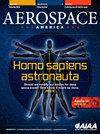Feasibility and Performance Analysis of High-Energy-Density Hydrocarbon-Fueled Turboexpander Engine
IF 0.1
4区 工程技术
Q4 ENGINEERING, AEROSPACE
引用次数: 0
Abstract
With the in-depth research on hypersonic aerodynamics and hypersonic propulsion technology, humans are growing closer to space travel. Recent studies have shown that the pre-cooled air-turborocket (ATR) or turboexpander engines are some of the potential propulsion methods for reusable space vehicles and single stage-to-orbit (SSTO) missions because they have a high specific impulse at low Mach numbers, which can overcome the problem of the “thrust gap” in turbine-based combined-cycle (TBCC) engines. The ATR engine needs an additional oxidizing agent and the turboexpander engine usually uses hydrogen as fuel, which has low energy density and poor safety. To address this problem, this paper proposed a high-energy-density (HED) hydrocarbon-fueled turboexpander engine, and its feasibility has been proven through a simplified thermodynamic model. Through detailed thermodynamic analysis based on the energy and pressure balance, this paper analyzed the performance characteristics of the engine to evaluate its capacity to work in a wide speed range at low Mach numbers. The results show that the endothermic hydrocarbon-fueled turboexpander engine has good specific impulse in Mach 0∼4 at an equivalence ratio of 0.7∼1.3, and the turboexpander engine can be combined with the dual-mode scramjet and become an efficient acceleration method for SSTO missions and the reusable spacecraft.高能量密度碳氢燃料涡轮膨胀发动机的可行性及性能分析
随着高超声速空气动力学和高超声速推进技术研究的深入,人类离太空旅行越来越近。近年来的研究表明,预冷式空气-涡轮增压发动机(ATR)或涡轮膨胀发动机在低马赫数下具有高比冲,可以克服涡轮联合循环(TBCC)发动机的“推力间隙”问题,是可重复使用航天飞行器和单级入轨(SSTO)任务的潜在推进方式。ATR发动机需要附加氧化剂,涡轮膨胀发动机通常使用氢作为燃料,能量密度低,安全性差。针对这一问题,本文提出了一种高能量密度(HED)碳氢燃料涡轮膨胀发动机,并通过简化的热力学模型验证了其可行性。本文通过基于能量和压力平衡的详细热力学分析,分析了发动机的性能特征,以评估其在低马赫数下大转速范围工作的能力。结果表明,吸热式碳氢燃料涡轮膨胀发动机在0 ~ 4马赫时具有良好的比冲,当量比为0.7 ~ 1.3,可与双模超燃冲压发动机相结合,成为SSTO任务和可重复使用航天器的有效加速方法。
本文章由计算机程序翻译,如有差异,请以英文原文为准。
求助全文
约1分钟内获得全文
求助全文

 求助内容:
求助内容: 应助结果提醒方式:
应助结果提醒方式:


